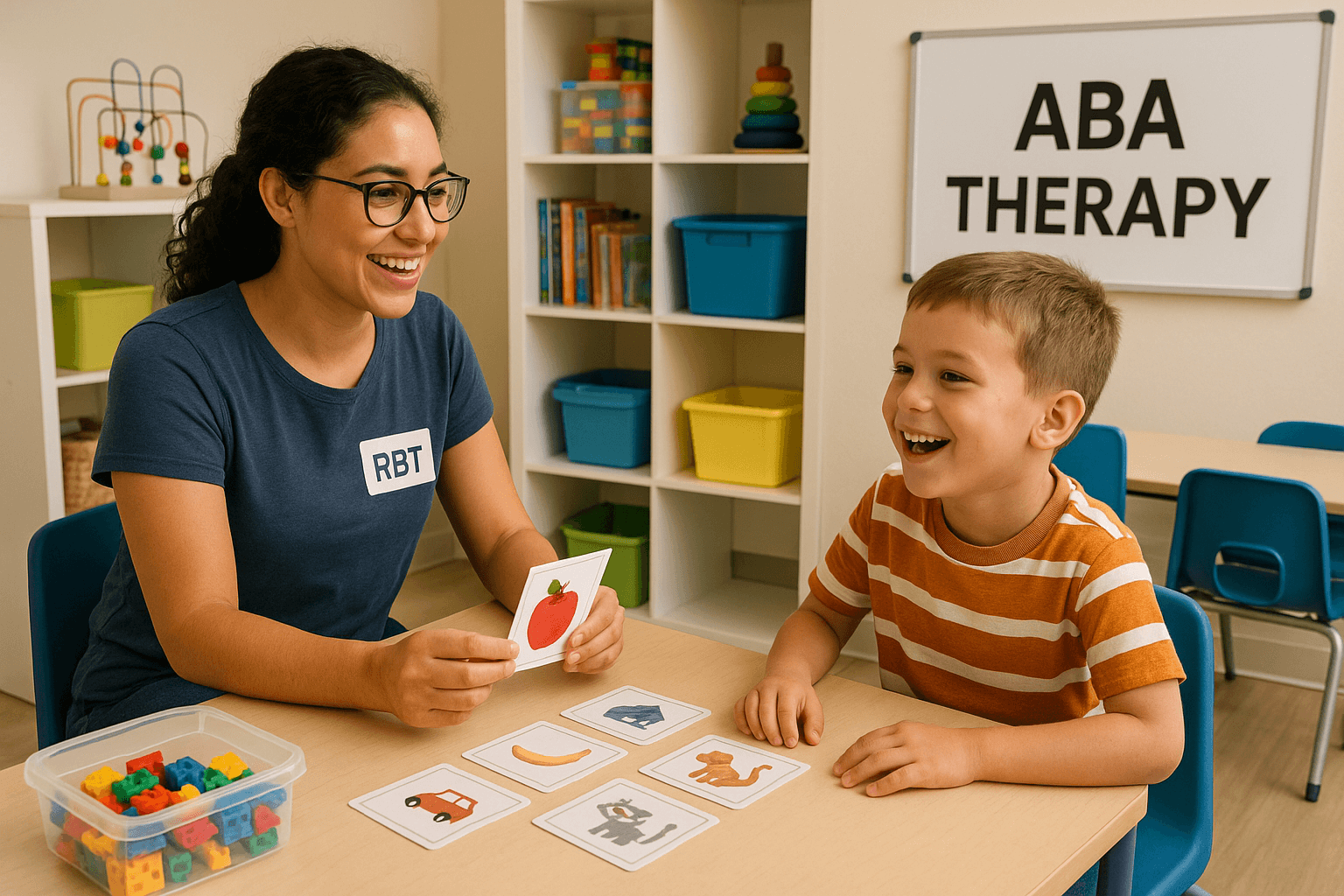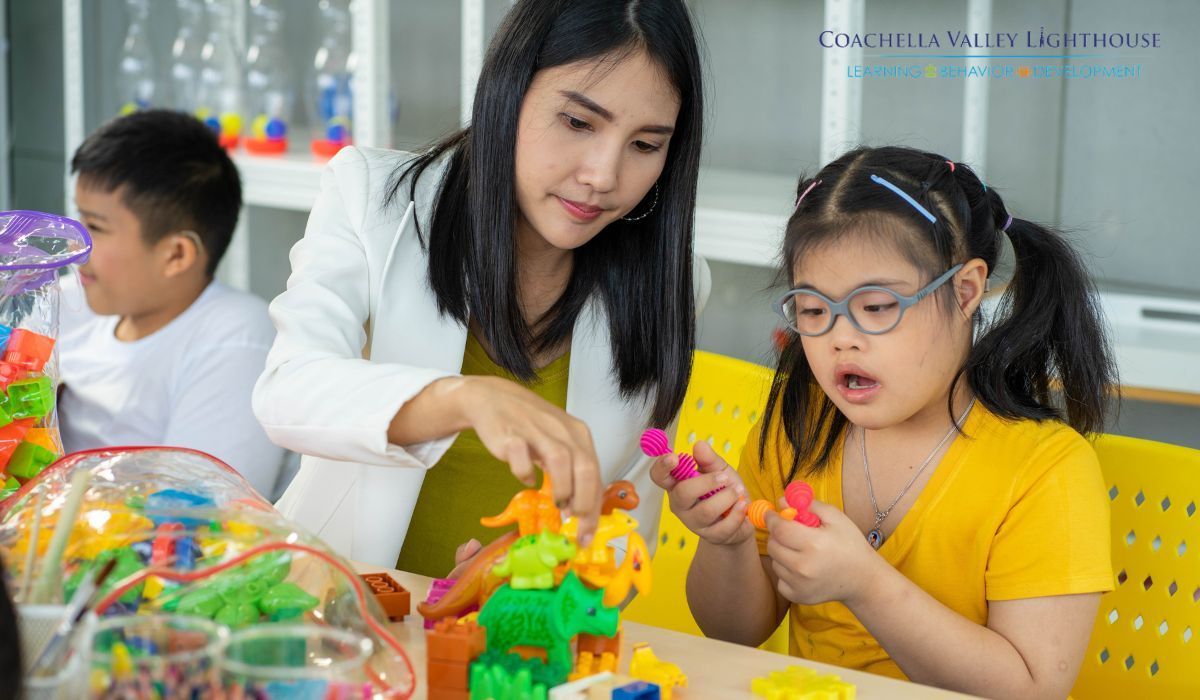ABA Intervention for Autism: How ABA Can Prepare Your Kids For School
Preparing children with autism for school can be a challenging endeavor. Still, the use of Applied Behavior Analysis (ABA) intervention for autism has emerged as a valuable method for school readiness. ABA offers a structured and personalized approach that equips children with the necessary skills to thrive in a school environment. This article delves into the fundamental aspects of ABA intervention for autism, its effectiveness in preparing children with autism for school, and the specific techniques employed.
Understanding ABA Intervention
What is ABA?
Applied Behavior Analysis (ABA) is a scientific approach that focuses on understanding and improving behaviors by applying interventions based on learning principles. It's a systematic, evidence-based method that breaks down tasks into smaller, manageable steps, reinforcing positive behaviors while discouraging negative ones.
Critical Components of ABA:
Positive Reinforcement: ABA utilizes positive reinforcement to encourage desired behaviors. This could involve rewards or praise when a child exhibits a targeted behavior.
Data-Driven Approach: ABA relies on data collection and analysis to track progress. This data helps in modifying and customizing interventions for the child.
Structured Environment: A structured environment provides predictability and consistency, aiding in learning and behavior modification.
Individualized Plans: Each child receives a personalized intervention plan tailored to their specific needs and challenges.
ABA and School Readiness for Children with Autism
Social Skills Development:
One crucial aspect ABA targets is social skills. For children with autism, navigating social interactions in a school setting can be daunting. ABA interventions systematically teach social skills like turn-taking, initiating conversations, and understanding social cues.
Language and Communication:
Many children with autism struggle with communication. ABA breaks down language skills into manageable components, helping children develop verbal and non-verbal communication abilities. This is pivotal for their participation in classroom activities and interactions with peers and teachers.
Academic Readiness:
Preparing children with autism for school involves not only social and communication skills but also academic readiness. ABA interventions aid in developing skills like attention span, following instructions, and task completion, which are essential for classroom success.
Behavior Management:
Addressing challenging behaviors is crucial for a child's success in a school environment. ABA identifies triggers for undesirable behaviors and implements strategies to mitigate them, promoting a more conducive learning atmosphere.
Techniques Employed in ABA Intervention
Discrete Trial Training (DTT):
DTT involves breaking down skills into smaller components and teaching them through repeated trials. It's a highly structured approach used to teach various skills, from basic to complex, and is particularly effective in improving language and social skills.
Pivotal Response Training (PRT):
PRT focuses on targeting pivotal areas of a child's development, such as motivation, self-management, and initiation. It encourages natural learning opportunities and empowers the child to take an active role in their learning process.
Visual Supports:
Visual aids, such as picture schedules and visual cues, are widely used in ABA interventions. These supports enhance understanding, facilitate communication, and promote independence in following routines and instructions.
Incidental Teaching:
This technique involves capitalizing on naturally occurring situations to encourage learning. It's a more naturalistic approach that promotes the generalization of skills learned in various environments, including the classroom.
Effectiveness of ABA in School Preparation
Research and Evidence:
Numerous studies have demonstrated the efficacy of ABA interventions in improving skills essential for school readiness in children with autism. Research consistently shows significant advancements in social, communication, academic, and behavioral domains following ABA therapy.
Long-Term Benefits:
The skills acquired through ABA interventions often extend beyond the therapy sessions, positively impacting a child's school performance, social interactions, and daily life, fostering long-term independence and success.
Collaboration with School Systems:
Collaboration between ABA therapists, educators, and parents is crucial in ensuring continuity in skill development. ABA programs that incorporate school collaboration often lead to smoother transitions and better support for children with autism in the school setting.
Further Impact of ABA on School Preparation
Inclusive Classroom Participation:
Preparing children with autism for school can be a challenging endeavor. Still, the use of Applied Behavior Analysis (ABA) intervention for autism has emerged as a valuable method for school readiness. ABA offers a structured and personalized approach that equips children with the necessary skills to thrive in a school environment. Collaboration between ABA therapists, educators, and parents is crucial in ensuring continuity in skill development. ABA programs that incorporate school collaboration often lead to smoother transitions and better support for children with autism in the school setting. This article delves into the fundamental aspects of ABA intervention for autism, its effectiveness in preparing children with autism for school, and the specific techniques employed.
Reduction in Challenging Behaviors:
One of the significant challenges for children with autism in school settings is managing disruptive behaviors. ABA interventions target the root causes of these behaviors, leading to a reduction in challenging actions and creating a calmer and more conducive learning environment for the child and their peers.
Tailored Support for Individual Needs:
Each child with autism has unique strengths and challenges. ABA's individualized approach ensures that the intervention is specifically tailored to address the particular needs of each child. This personalized support maximizes the effectiveness of the intervention in preparing them for school.
Transition Support:
Transitioning into a school environment can be overwhelming for children with autism. ABA not only prepares them academically and socially but also offers support in managing the transition itself. This includes preparing the child for changes in routines, new social dynamics, and adapting to the school environment.
Empowerment and Independence:
ABA empowers children with autism by teaching them essential skills that foster independence. Whether it's self-management, communication, or problem-solving abilities, these skills enable children to navigate school environments with greater confidence and autonomy.
Challenges and Future Directions
Accessibility and Availability:
While ABA has shown immense promise, accessibility to these interventions remains a challenge for many families due to factors like cost, location, or limited availability of trained therapists. Addressing these barriers is crucial in ensuring that all children with autism have access to beneficial ABA interventions.
Adaptation to Diverse Settings:
Ensuring that ABA interventions are adaptable to various educational settings and diverse cultural contexts remains an ongoing challenge. Flexibility in implementing ABA techniques in different school environments is essential for maximizing its effectiveness.
Advancements in Technology:
Technological advancements present opportunities to enhance ABA interventions. Incorporating innovative tools and digital platforms could expand the reach of ABA, making interventions more accessible and engaging for children with autism.
Research and Continuous Improvement:
Continued research in the field of ABA is vital for refining existing techniques and developing new strategies. This includes exploring the long-term outcomes of ABA interventions and identifying the most effective approaches for different age groups and levels of severity in autism.
The Role of Families and Educators
Parental Involvement:
Families play a crucial role in the success of ABA interventions. Active participation, consistency in implementing strategies, and reinforcing learned skills at home significantly contribute to a child's progress.
Educator Training and Collaboration:
Educators benefit from training in understanding and implementing ABA strategies within the classroom. Collaborative efforts between ABA therapists and educators ensure a cohesive approach, promoting the application of learned skills in the school environment.
Conclusion
In conclusion, the impact of Applied Behavior Analysis (ABA) interventions in preparing children with autism for school is profound. ABA equips these children with essential skills across social, communication, behavioral, and academic domains, enabling them to thrive in educational settings.
To explore how ABA can benefit your child and support their journey towards school readiness, reach out to us at Coachella Valley Lighthouse. Our team of experts is dedicated to providing tailored support and guidance, empowering your child with the tools they need to succeed.
Remember, collaboration between therapists, educators, and families, alongside ongoing research and advancements, continues to shape a more inclusive and supportive landscape for children with autism. Together, let's pave the way for a brighter future for every child.
FAQs
What age is suitable for starting ABA therapy to prepare a child for school?
ABA therapy can be beneficial for children diagnosed with autism at various ages. Early intervention, typically starting around 2 to 5 years old, is often recommended to maximize the impact. However, ABA can be valuable for older children as well, adapting interventions to their specific needs.
How long does it take to see progress in a child undergoing ABA therapy?
The progress of a child undergoing ABA therapy varies based on individual factors such as the child's age, severity of autism, and consistency in therapy implementation. Some children may show noticeable improvements in a few months, while others may require more extended periods to demonstrate significant progress.
Can ABA interventions be incorporated into the school curriculum for children with autism?
Yes, ABA strategies and interventions can be integrated into a child's school curriculum. Collaborative efforts between ABA therapists, educators, and parents facilitate the implementation of these strategies within the school setting, supporting the child's learning and social interactions.
Are there any potential side effects of ABA therapy?
ABA therapy is generally considered safe and effective. However, as with any treatment, some children may experience initial frustration or resistance to change. Therapists and families must monitor the child's response and adjust interventions as needed to ensure a positive experience.
How can parents reinforce ABA strategies at home to support school readiness?
Parents can reinforce ABA strategies by implementing consistent routines, using visual aids, and providing positive reinforcement for desired behaviors at home. Collaboration with the child's ABA therapist helps in understanding and implementing strategies effectively.
What age is suitable for starting ABA therapy to prepare a child for school?
ABA therapy can be beneficial for children diagnosed with autism at various ages. Early intervention, typically starting around 2 to 5 years old, is often recommended to maximize the impact. However, ABA can be valuable for older children as well, adapting interventions to their specific needs.











